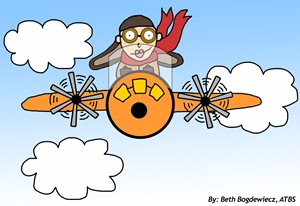 The trucking industry is a male dominated one, but it shares this reputation with other modes of transportation that typically employ mostly men. Lillian Miller, who works for the Federal Aviation Administration, wanted to explore ways to attract more women into transportation careers. She recently released her research, “Women in Transportation are Moving the World.”
The trucking industry is a male dominated one, but it shares this reputation with other modes of transportation that typically employ mostly men. Lillian Miller, who works for the Federal Aviation Administration, wanted to explore ways to attract more women into transportation careers. She recently released her research, “Women in Transportation are Moving the World.”
Miller compared the airline industry and its efforts to attract and retain women to the trucking industry. Female pilots comprise 6.3 percent of all airline pilots and number about 6,000, while the trucking industry lags at 5.2 percent female drivers, or about 180,000. Although a professional driver must reach age 21 to operate in interstate commerce, a pilot must be at least 23 years old to transport passengers.
Both the trucking industry and airline industry are experiencing a need to attract more professionals, as more than 23 thousand pilots are needed each year (international figures) and the trucking industry has similar needs to fill seats.
Through interviews with female drivers and pilots, Miller compared these two roles, which she describes as “nomadic lifestyles.” While both groups must pack clothing and toiletries to last several days (or weeks), pilots must take into account the size and weight of their luggage, as well as the effect a pressurized cabin has on these items.
The author describes the training scenario for female drivers who must often share a cab with an unrelated male trainer. “It’s hard enough to share a small space with a female, let alone a male stranger,” Miller writes. The lack of restroom facilities in the cab creates an even greater strain on a female driver.
For pilots, restrooms (lavatories) are nearby and there are many hours of instruction from the airlines in regard to crew management. Miller suggests the need for high absorbency “containment trunks” used by astronauts as an option for female drivers. She also advocates a 24 hour hot line for drivers to call in the event a “situation” arises, which the airline industry has in place.
One definite difference between female pilots and female professional drivers is the ability to be accompanied by a pet. She spoke with drivers who have pets for both safety reasons as well as companionship. Airline pilots with pets either have a family member or neighbor available to care for their dogs or cats when they are traveling.
Miller sites a National Sleep Foundation study comparing the sleep habits of all transportation professionals that found a similarity between drivers and pilots. They both have the longest duty shifts, with nearly half working nine to twelve hours each day. Only 43 percent of the pilots reported receiving eight to twelve hours off between shifts, compared to 53 percent of drivers. To add to the time traveling, most pilots must travel to and from their work site, either by air or automobile travel.
Female airline pilots sleep in hotels, and are trained to enter a room in pairs to reduce the risk of harm. Female professional drivers often travel alone and park in a truck stop, which brings its own hazards.
The trucking industry is an unhealthy environment when it comes to eating and exercising. Miller writes that many pilots bring their own lunches or pack healthy snacks, but often have the luxury of a hotel breakfast or dinner. Professional drivers may bring food from home, but the need to socialize brings them into the truck stop restaurant at times. Healthy choices are more common today, but the driver has to make conscience decisions to choose these (usually) more expensive items instead of the quick energy boosters, including soda and candy bars.
One interesting point Miller omitted concerns time away from home. Drivers often cite this as a reason to leave the industry. However, since the airline have a predominantly female flight attendant population, that argument was not even mentioned as being an issue with pilots.
Miller concludes the report with recommendations for both the trucking and airline industries and suggests that female drivers and female pilots make an effort to connect and learn from each other. An interesting idea and one that could help both groups increase their presence in the transportation industry.